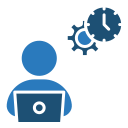Mastering Time with Proven Frameworks
Map your peak focus window and reserve it for the single most important task. I color-code deep work blocks in bold blue and defend them fiercely. Shallow tasks live elsewhere. Try a four-day experiment, then report back: did your meaningful progress accelerate compared to scattered multitasking?
Mastering Time with Proven Frameworks
Classical Pomodoro is 25/5, but remote life benefits from flexibility: 50/10 for complex writing, 15/3 for inbox triage. I keep a physical timer to reduce tab temptation. Track sessions completed, not hours sat. Which interval fits your work? Share your favorite rhythm so others can test it.





